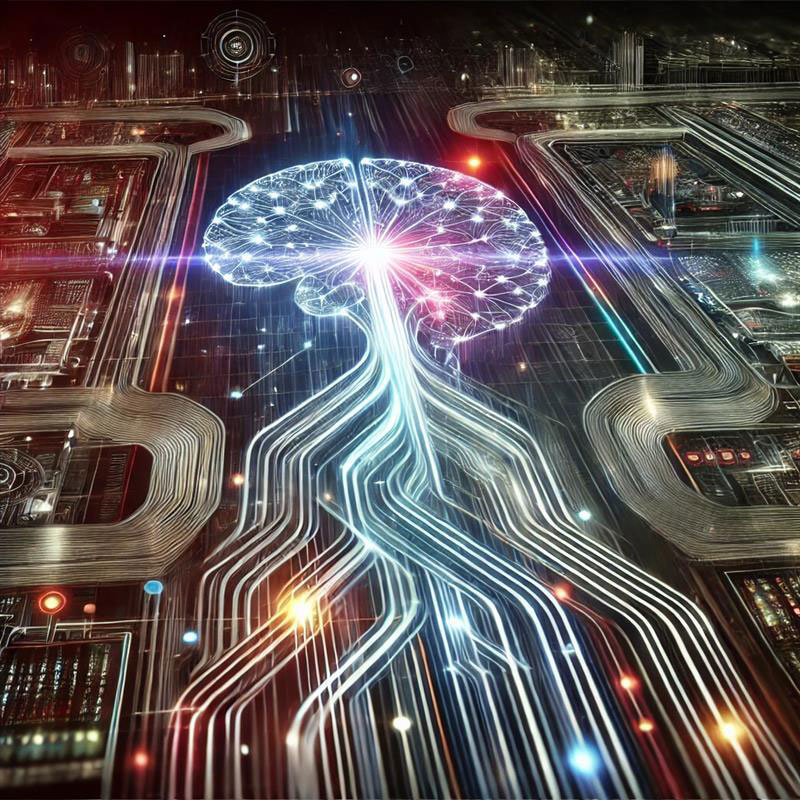In the realm of modern technology, agentic systems are gaining prominence. These systems, powered by artificial intelligence (AI), are transforming industries and business operations.

Agentic systems are complex, interactive, and intelligent. They are built on agent-based models, which simulate intricate systems and processes. Autonomous agents, the building blocks of these systems, create dynamic interactions and responses.
Also Read: Unleashing the Power of Azure AutoGen and AI Bots
For IT Leaders, understanding these systems is crucial. It’s not just about keeping up with AI advancements, but also effectively communicating these concepts to their teams. This knowledge facilitates informed decision-making and strategic planning.
Business Strategy Consultants also benefit from comprehending the practical applications of AI and ML. This understanding allows them to advise clients on the strategic deployment of these technologies, enhancing their consulting services.
For Chief Data Officers (CDOs), agentic systems offer a roadmap for integrating AI into their operations. This integration can drive meaningful insights, monetize organizational data, and improve efficiencies.
So? What is Agentic AI? It still sounds conceptual, so before diving deeper:
What sets Agentic AI apart?
- Autonomy: Unlike traditional AI, which relies on human input and guidance, agentic AI can make its own decisions and take actions to achieve specific goals.
- Learning and Adaptation: It’s not just about following instructions; agentic AI can learn from its experiences, adapt to new situations, and improve its performance over time. Essentially, making its own decisions that were not based on human inputs or instructions.
- Pre-defined Tasks: Agents do need a task or objective to complete, and they need to stay within the bounds of that task. For example, an agent task might be to migrate a dataset from one location to another, but it cannot deviate and decide to process payroll. Bounding agents to their task(s) is critical for successful and responsible use of Agentic AI.
This article seeks to offer a thorough understanding of agentic systems in today’s technology, their real-world uses, and the best practices for managing them.
Also Read: Navigating GenAI Deployments – Ensuring Security & Simplicity
The Essence of Agentic Systems
Agentic systems are defined by their capacity to perceive and respond autonomously. These systems function by emulating human-like agency through intelligent algorithms. They evolve to meet dynamic demands, adapting in real-time to new inputs and changing conditions.
At their core, agentic systems incorporate multiple autonomous agents working cohesively. Each agent possesses decision-making capabilities, contributing to the overall system’s behaviour. This interconnected structure enables the system to operate independently, offering solutions and enhancing efficiency in complex scenarios. Understanding this essence is vital for leveraging their full potential in modern technological applications.
Also Read: Adaptive AI Use Cases in Financial Services, Healthcare, and Retail
Agent-Based Models: Simulating Complexity
Agent-based models are key to understanding intricate systems. They simulate interactions between diverse agents to unveil complex dynamics. These models are instrumental in forecasting behaviors that emerge from multi-agent interactions.
Each agent in these models operates based on a set of rules, responding to the environment and other agents. This approach helps in dissecting complex phenomena, such as market fluctuations or ecosystem dynamics. By providing insight into these systems, agent-based models guide decision-makers in devising strategic, data-driven solutions for various industries.
Autonomous Agents: The Building Blocks of Interactive Systems
Autonomous agents are at the heart of interactive systems. These entities function independently, making decisions and taking actions without human intervention. Their ability to operate autonomously opens new avenues for innovation.
These agents are pivotal in creating dynamic environments across various sectors. From virtual assistants streamlining daily tasks to robots managing complex manufacturing processes, they offer transformative potential. By enhancing responsiveness and efficiency, autonomous agents drive technological advancement and facilitate seamless user interactions. In harnessing these agents, industries can achieve unprecedented levels of automation and interactivity.
Intelligent Systems: Evolution and Impact Across Industries
Intelligent systems represent a significant leap in technology evolution. They are designed to learn, adapt, and improve over time, making them invaluable across various domains. From healthcare to finance, their applications are vast and transformative.
These systems enable businesses to make data-driven decisions with greater accuracy. In sectors like transportation, intelligent systems optimize logistics and enhance safety. In retail, they enable personalized customer experiences, revolutionizing how services are delivered. By bridging data analytics and advanced computing, intelligent systems redefine industry standards and drive innovation. The potential for intelligent systems to transform industries is immense, offering enhanced efficiency and competitive advantages.
Bridging the AI Aspiration-Implementation Gap for CDOs
Chief Data Officers (CDOs) face hurdles in translating AI aspirations into tangible implementations. These challenges stem from a lack of clear roadmaps for integrating AI into daily operations. To move from vision to execution, CDOs must address specific areas.
Key steps to bridge this gap include:
- Developing a comprehensive strategy tailored to organizational objectives.
- Ensuring high-quality data is accessible for training AI models.
- Fostering a culture that embraces innovation and continuous learning.
By concentrating on these priorities, CDOs can effectively drive AI initiatives. This approach maximizes data value, improves decision-making, and enhances business outcomes.
AI and ML Practical Applications for Business Strategy Consultants
Business Strategy Consultants need a clear grasp of AI and ML’s practical applications to advise clients effectively. These technologies offer transformative potential across various industries, enhancing efficiency and decision-making processes.
Understanding their real-world applications is essential for strategic deployment.
Here are key areas where AI and ML can be applied:
- Personalizing customer experiences through data analysis.
- Streamlining supply chain management with predictive analytics.
- Enabling smarter, data-driven decision-making processes.
By focusing on these applications, consultants can guide clients in harnessing AI and ML’s potential. This ensures strategic alignment with business goals and fosters competitive advantage in the marketplace.
Challenges and Strategies for IT Managers
IT Managers face numerous challenges in the rapidly evolving AI and technology landscape. Keeping up with constant advancements is demanding, and effectively communicating these to non-technical team members adds to the complexity. Bridging this gap is crucial for successful technology integration.
To navigate these challenges, IT Managers can adopt several strategies:
- Attend industry conferences and workshops to stay current.
- Encourage a culture of continuous learning within the team.
- Utilize clear visual aids to explain complex concepts.
By implementing these strategies, IT Managers can facilitate informed decision-making within their organizations. This enhances operational efficiency and aligns with technological advancements.
Governing Agentic AI Systems: Best Practices and Ethical Considerations
Effective governance of agentic AI systems requires a balance between innovation and responsible use. Organizations must establish guidelines that ensure ethical AI deployment, addressing both risks and benefits.
Key practices for governing agentic AI systems involve:
- Establishing transparent protocols for AI decision-making.
- Implementing robust security measures to protect data.
- Encouraging stakeholder involvement in AI governance processes.
These practices help maintain accountability and trust in AI technologies. By prioritizing ethical considerations, organizations can mitigate potential biases and ensure fair outcomes. Building a strong governance framework fosters responsible AI innovation and aligns with organizational values.
Case Studies: Agentic Systems in Action
Agentic systems are transforming industries with tangible results. In healthcare, autonomous agents streamline patient data management, leading to faster diagnoses. These systems enhance operational efficiency by predicting and allocating medical resources effectively.
In manufacturing, agent-based models optimize supply chains. By simulating complex production processes, they identify bottlenecks and improve decision-making. This results in cost savings and increased productivity. Such real-world applications showcase the potential of agentic systems in driving industry innovation.
Successful case studies illustrate their role in improving both operational efficiency and service delivery across various sectors. Understanding these examples helps business leaders realize their strategic value.
The Future of Agentic Systems: Trends and Predictions
The future of agentic systems is bright, with advancements in AI driving their evolution. Expect increased integration within enterprise workflows, enhancing connectivity and intelligence. These systems will become more autonomous, enabling businesses to achieve greater efficiency. Keeping current with these trends is crucial for maintaining a competitive edge. By understanding these key aspects, we can appreciate the potential of Agentic AI to revolutionize various industries and solve complex problems. However, it’s important to approach this technology with caution and ensure that it is developed and used in a way that is aligned with business goals and human values.
Also read: GenAI In SDLC: Advancing Towards Self-Repairing Code
Also read: Common Challenges in Claims Management
Also read: The Rise of Agentic AI in Banking
Also read: Understanding Gibberlink Mode: AI’s Next Leap – How Do We Ensure It Stays in Check?




